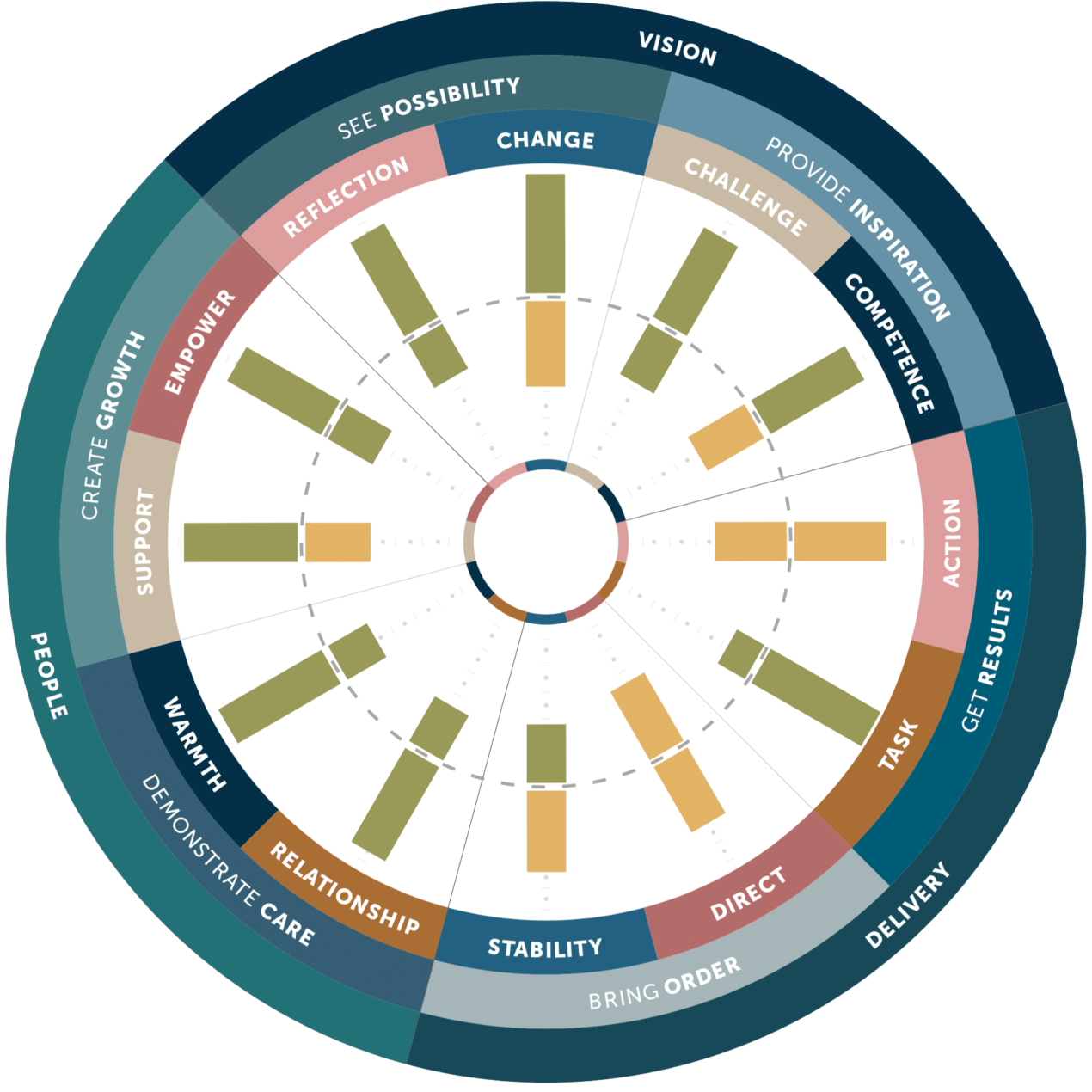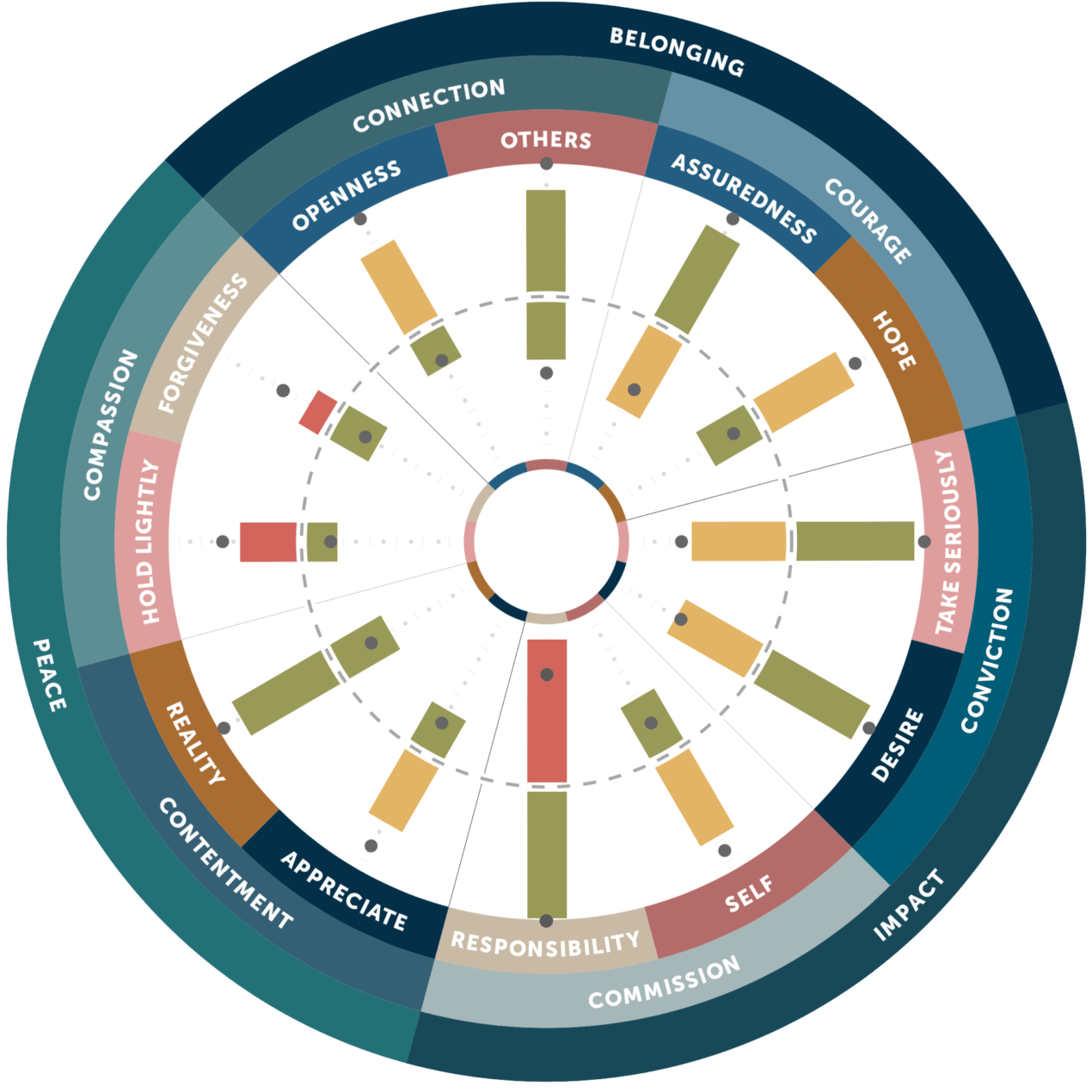Leaders are constantly bumping into a minefield of contradictions. For every year-end review that tells you to be warm and connect with your people, there’s another that says to be competent and know your industry. For every leadership book that advises confidence is key, there’s a podcast that says vulnerability is crucial. For every expert that urges you to be positive, enthusiastic, and optimistic about the organization’s agenda, you will find another who says you should be transparent about the challenge ahead.
The most effective leaders develop the capacity to hold the tension of Both/And. They discover an expanded way of seeing and being that taps into the value of both this and that. They learn to be warm and connect while being competent in what they know, they show up with confidence while also allowing people to see them, they are optimistic about where they are headed and grounded in the reality of where they are. The KPI is a practical and transformational tool that helps individuals and teams expand their impact by increasing their capacity to lead from a Both/And perspective.
See and Make Sense of Your Reality
Polarities are one way to honor the complexity of leadership and uncover where conflicts surface. The KPI helps leaders see and make sense of fundamental paradoxes that persist over time.
“Mind altering”, “Really great way to see what is going on inside and outside yourself” “To see how your fears of the overuses of your less preferred pole drive your mindsets and behaviors.” “Polarity thinking is amazing”.
Program Participant
Step out of Suffering and into Success
When we learn how to navigate polarities, success follows. When we fail to notice polarities or unconsciously mistake them for a problem to solve, suffering is likely.
Suffering Paradox
When groups encounter a polarity and don’t have a way to make sense of it or understand it as an interdependent pair, they experience a series of stages called Suffering Paradox.
Preferencing
Giving preference to one pole over the other
Attaching
Wedding oneself to a pole (at all costs)
Othering
Creating “the Other” to personify the tension
PROTECTING
“things [can] get personal and battle lines [can] get drawn in the sand”JUDGING
“make one side of the argument the good guys and the other side the bad guys.”PROVING
“everybody tries to force their opinions and thoughts and beliefs about the situation on others”ASSUMING
“you look and say, ‘yep, I knew you were gonna do that’”Either/Or-ing
Problem solving from an either-or mindset
Destructive Tension
-
RESULTS
- Failure – “you can’t succeed if you can’t get everyone on board”
- Stuck/Frozen – “everything just grinds to a halt”
- Narrow/Poor Decisions – “we’d make decisions with only half of the information on the table”
-
MORALE
- Apathy – “People just check out – it’s exhausting”
- Negativity/Cynicism – “people get so negative…it’s not fun”
- Despair – “it seems like there’s no way out…it’s depressing”
-
COMMUNICATION
- Misunderstanding – “everyone is so sure they’re right, they don’t even try to understand a different point of view”
- Not Listening – “no one listens…they just want to prove their point”
- Blinders – “we were completely blind to the downsides of our pole”
-
RELATIONSHIPS
- Resistance/Sabotage – “you just want to see them fail”
- Conflict – “only one pole can win, so people will put up a fight”
- Anger/Resentment – “it can get really ugly and hostile”
Navigating Paradox
When a group can see the polarity and has a way to make sense of it, the tension in the dynamic can turn into a creative force rather than a destructive one – experiencing a series of stages called Navigating Paradox.
Mapping
Using a sensemaking tool to see, discuss, and embody
Divining
Seeing and sharing a fuller picture of the past, present, and future
APPRECIATING POLARITIES
“[it was] a life-changing moment”“[it makes you] see the world differently”
EXPLAINING THE PRESENT
“when it clicked, I was like, Wow! Wow! [pause, then quieter] Wow. It was like, ‘oh, my God, that’s amazing’ – it really was. I mean, it felt, it just explained so much and helped us see it so differently.”ILLUMINATING THE PAST
“pointed and said, ‘Look! We were way over here which is why we ended up wanting the change…it’s not because we didn’t know what we were doing…see, we ain’t crazy!”REVEALING THE FUTURE
“you can see into the future to see what’s going to happen. Things are Ok now, but we’ll end up [in those downsides] if we don’t watch it”“the light bulb goes off and [they are] like, I get it…that’s why we can’t reorganize because we’ll just end up over there”
REFRAMING THE PROBLEM
“[you start to see that we] will not be able to get rid of this thing”“it was such a relief to know that we don’t have to solve this, we just have to stay on top of it”
Synthesizing
Understanding Self, Other, and We
Both/And-ing
Problem Solving from a mindset that assumes both are needed for success
Creative Tension
-
RESULTS
- Action – “you can create actions that people actually get behind”
- Movement – “been stuck so long, felt great to get moving”
- Informed Decisions– “not just reacting…taking more into account”
-
MORALE
- Excitement – “the talking speeds up, people get excited”
- Creativity – “actions and flags become a really creative process”
- Hope – “OK, so we can actually do something about this”
-
COMMUNICATION
- Understanding – “finally having a decent conversation”
- Listening – “the point actually gets across…they heard [the message]”
- Open – “people give more space for views to get out in the open”
-
RELATIONSHIPS
- Support – “know I need them to do it if I’m going to [be successful]”
- Synergy – “we were all going in the same direction, was actually fun”
- Trust/Respect – “you can understand their actions and motivations better”
More effective leaders. More cohesive teams. More purposefully, productive organizations.
Both/And leaders make more informed decisions, develop greater trust and respect in relationships, build more engaged teams with higher morale, and drive better results. They also have the capacity to embrace ambiguity, thrive in complexity, and adapt to the constantly changing demands of the business.
Organizations that develop Both/And leaders are more willing to experiment and fail, share critical feedback to enable learning and ongoing adjustments, and remain more relevant over the long term.
Curious to Learn More?
We’d love to connect with you to learn more about your needs and explore how the KPI could help.


